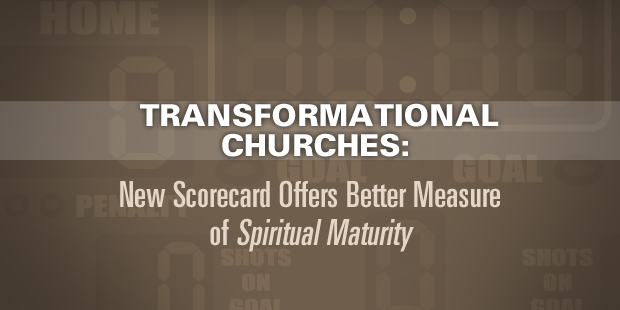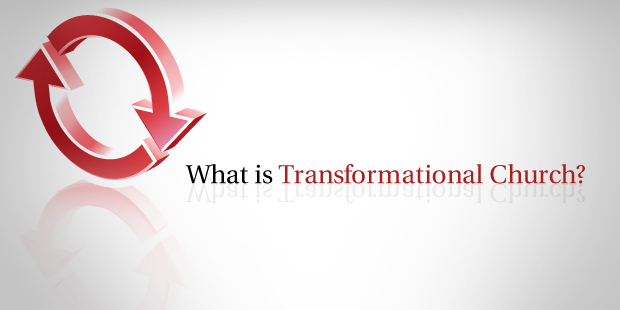
Transformational Churches: New Scorecard Offers Better Measure of Spiritual Maturity
While no church is likely to ever say, “We’ve arrived!” when talking about their spiritual journey, there are churches happy to say, “We’re moving in the right direction!”
But how do you know where your church is spiritually if you have no means of measuring the issues that bring transformation to lives and communities? Fortunately, quality church assessment tools can help leaders identify strengths and weaknesses in your church and where your church is following Christ and living on mission.
Why use an assessment tool?
Assessment tools give churches a practical view of where they are and can inform next steps. They also allow leaders to learn what God is doing in other churches and to gain wisdom from those churches.
Church assessments can help your church focus on strengths and weaknesses and guide conversations about the important issues in your church as well as offering clarity to the church staff about where and how to lead the church.
While you can take your church through an assessment at any point in the year, there are key times in the life cycle of a church when an assessment would be beneficial. For instance, the kickoff of small groups or Sunday school classes and planning for the new year or an upcoming sermon series are all times when having a spiritual snapshot of your congregation is helpful.
Transformational churches
In 2012 hundreds of churches participated in LifeWay’s Transformational Church initiative, giving their congregations an accurate look at where they believe they are in their spiritual journey. LifeWay developed Transformational Church by surveying thousands of churches from multiple denominations that are leading examples of spiritual transformation providing a biblical framework for the Transformational Church Assessment Tool (TCAT). This framework helps churches evaluate how they are doing with a new scorecard.
While this new scorecard measures the tangible – leadership training, worship attendance and number of people participating in some type of Bible study – it also measures the more intangible elements of church life.
The TCAT helps churches get an honest look at how their members perceive they are doing in relation to spiritual transformation. The results provide them with a snapshot of perceived strengths and perceived challenges based on the seven elements of a transformational church: missionary mentality, vibrant leadership, relational intentionality, prayerful dependence, worship, community and mission.
Before diving into the assessment tool, it is recommended to prepare your key leaders by reading Transformational Church by Ed Stetzer and Thom Rainer and watching the Transformation Church DVD. Some pastors have opted to take the entire church through a sermon series on the elements of a transformational church before taking the assessment.
When it comes to interpreting the results and determining next steps, churches have several options. They can work independently with their key leaders or in peer learning groups with other churches going through the TCAT allowing them to gain objective insights from each other.
Many churches find the most productive path is to work with a trained TCAT consultant who facilitates the discovery process to understand the strengths and challenges of the church, where God is already at work in the church, and where He’s leading them in the church’s spiritual transformation. Consultants are available through a church’s district, state convention or church network. Even with a trained TCAT consultant, it is essential that decisions and insights gained from the process come from within the body of the local church and not from an outside source. The consultant simply brings an objective outside perspective and a plan to walk through the process together.
Self-evaluation
Andrew Morgan, pastor of Immanuel Baptist Church in Salisbury, Md., said one thing he appreciated about the TCAT was it is a self-evaluation, not a program.
“There was no one coming in making a judgment about who we are,” Morgan said. “We did that ourselves. The TCAT allowed us to look in a mirror and get a realistic picture of how we see ourselves as a church.”
He said one thing they learned is that while they considered themselves very much a family church and thought they were communicating that well to others, that may not have been the case.
“We saw that people outside our congregation may not have been getting that message,” he said. “We’ve been at our location long enough that we weren’t really communicating with the neighborhood, and they weren’t communicating with us. There wasn’t a problem or anything, we were all used to each other being there. That recognition is leading us to be more intentional about engaging our community.”
Consultants beneficial to success
Sergio Arce, who leads LifeWay’s Transformational Church consultant training said a consultant can be a helpful third party “who can look at the results with an unemotional and impartial eye and help the congregation understand how their perceptions will set the track they need to take toward spiritual transformation.”
River Cross Church in Gainesville, Fla., worked with Transformational Church consultant Susan Silvers. River Cross pastor David Patterson said Silvers was particularly crucial to their success.
“For the first time ever, we were able to see objective feedback on the effectiveness of our church, something that is difficult to see,” said Patterson.
He said Silvers coached him and other church leaders through the process of the TCAT and then helped them understand the results in preparation for the discovery retreat where 25 people discussed how to move their church to a place of spiritual growth.
“Afterwards she did an excellent job of following up with me as we put together some action plans … to improve our assimilation process to better connect and orient new attenders and members,” he wrote. “We have also improved our leadership development.”
“These churches are seeing significant movement toward spiritual growth,” Arce said. “One very positive thing we are hearing is how many churches are seeing that they are doing OK. They don’t need to make major changes; they just need to go ahead and do what they already know they need to do.”
Obviously, assessments are not flawless. However, when based on sound research, they can reveal weaknesses and blind spots local churches often don’t see. Churches willing to take a deeper look at themselves are no longer satisfied with just filling seats week after week, rather they are seeking change.
Said Arce: “This tool helps churches discover new ways to focus on helping people become more like Jesus; churches act more like the body of Christ; and communities reflect more of the Kingdom of God.”
This article reproduced with permission from Facts and Trends.

Tags: Facts and Trends, Multiplication, Polly House, Transformational Church, Transformational Church Assessment Tool













